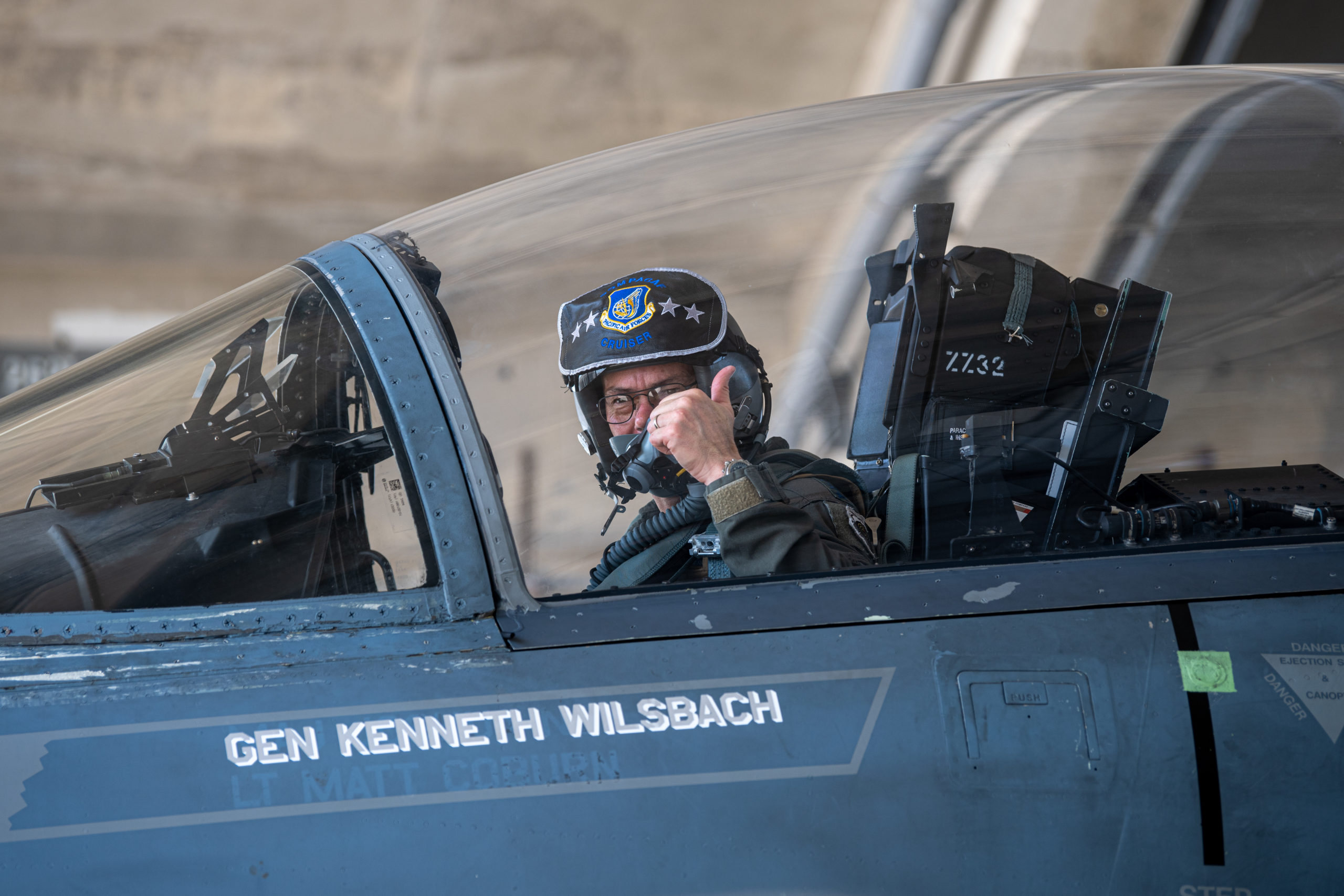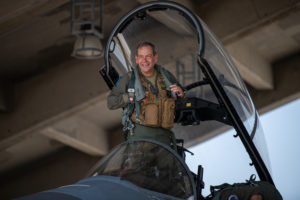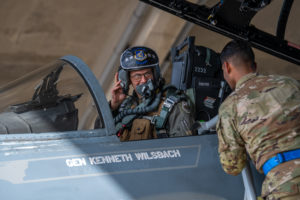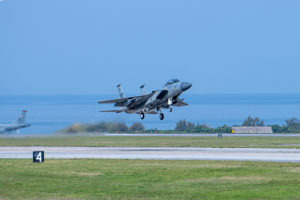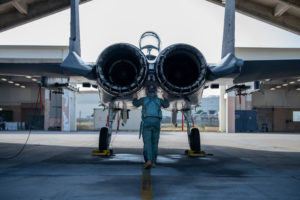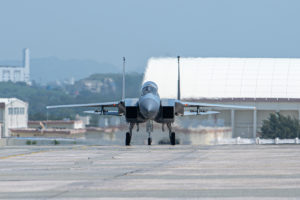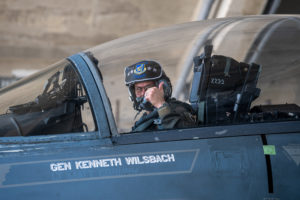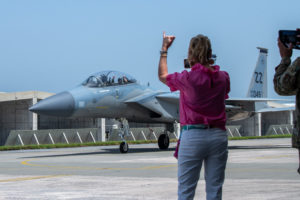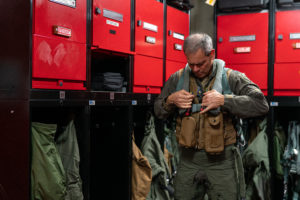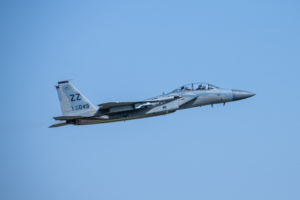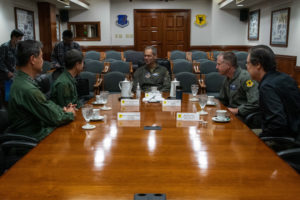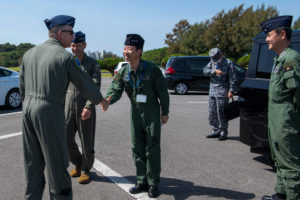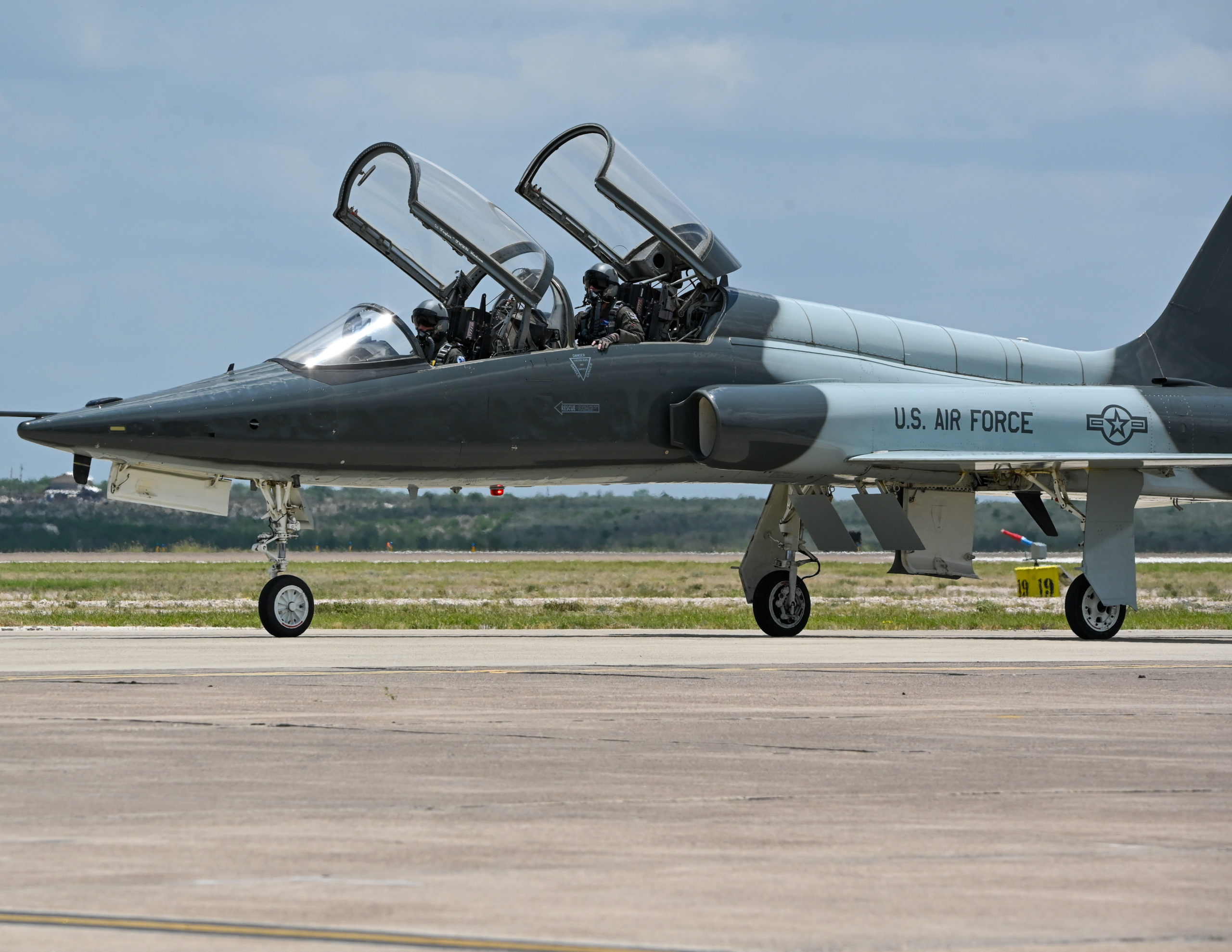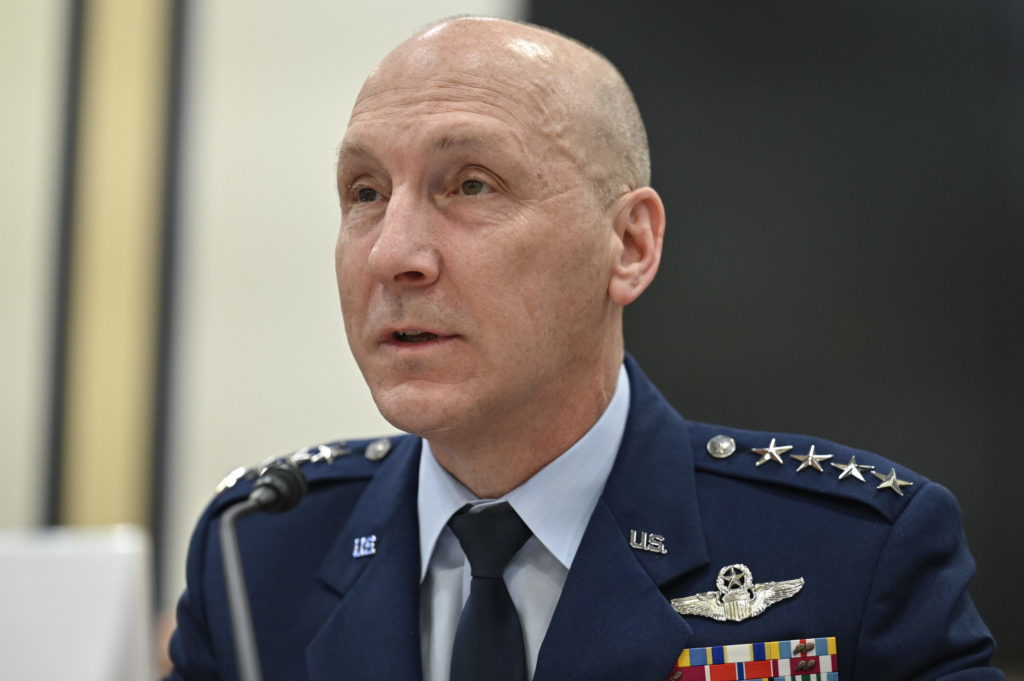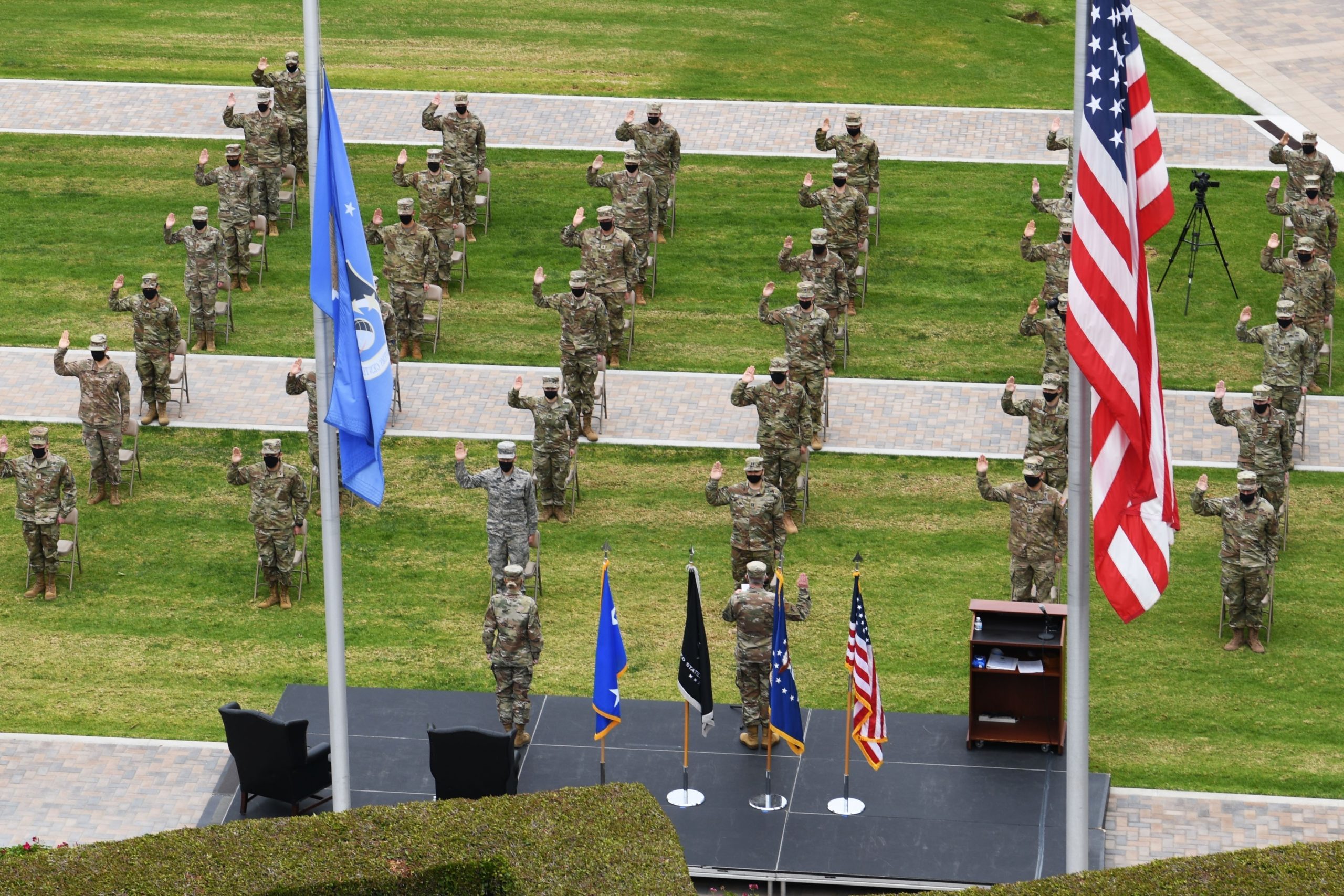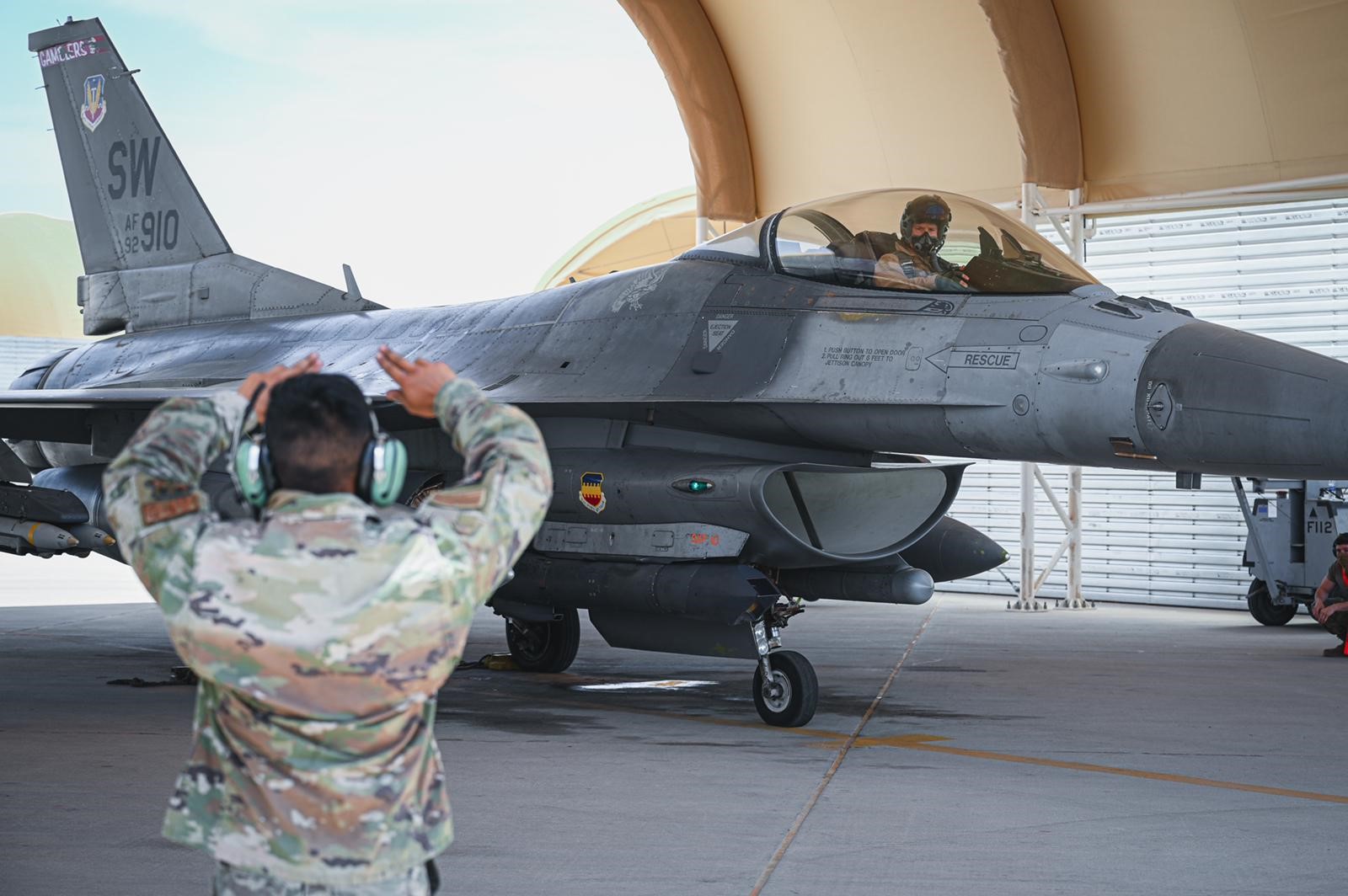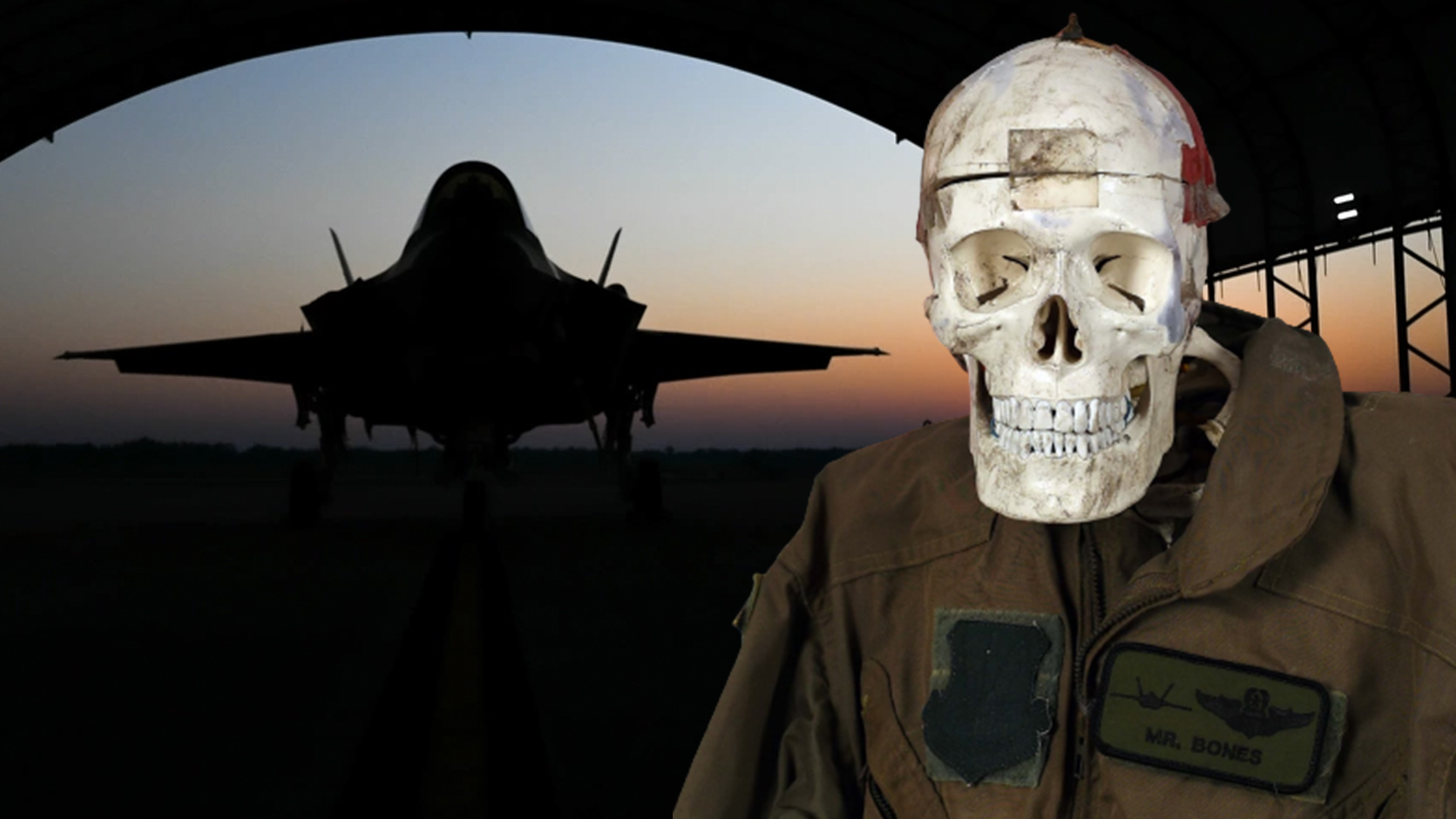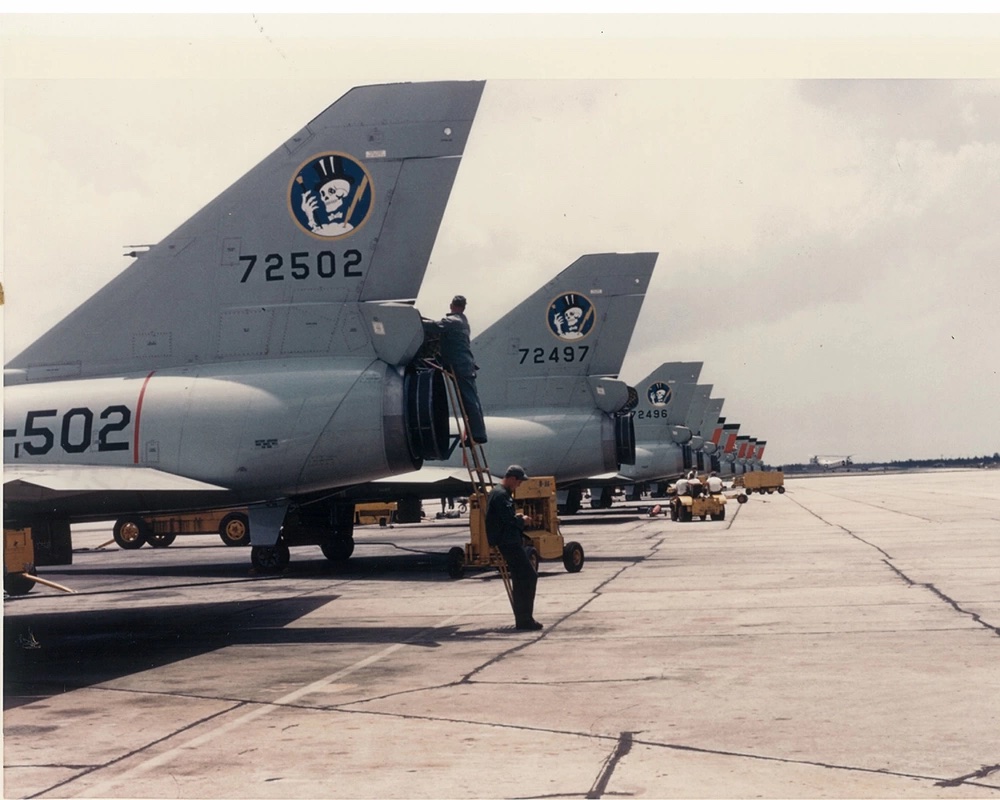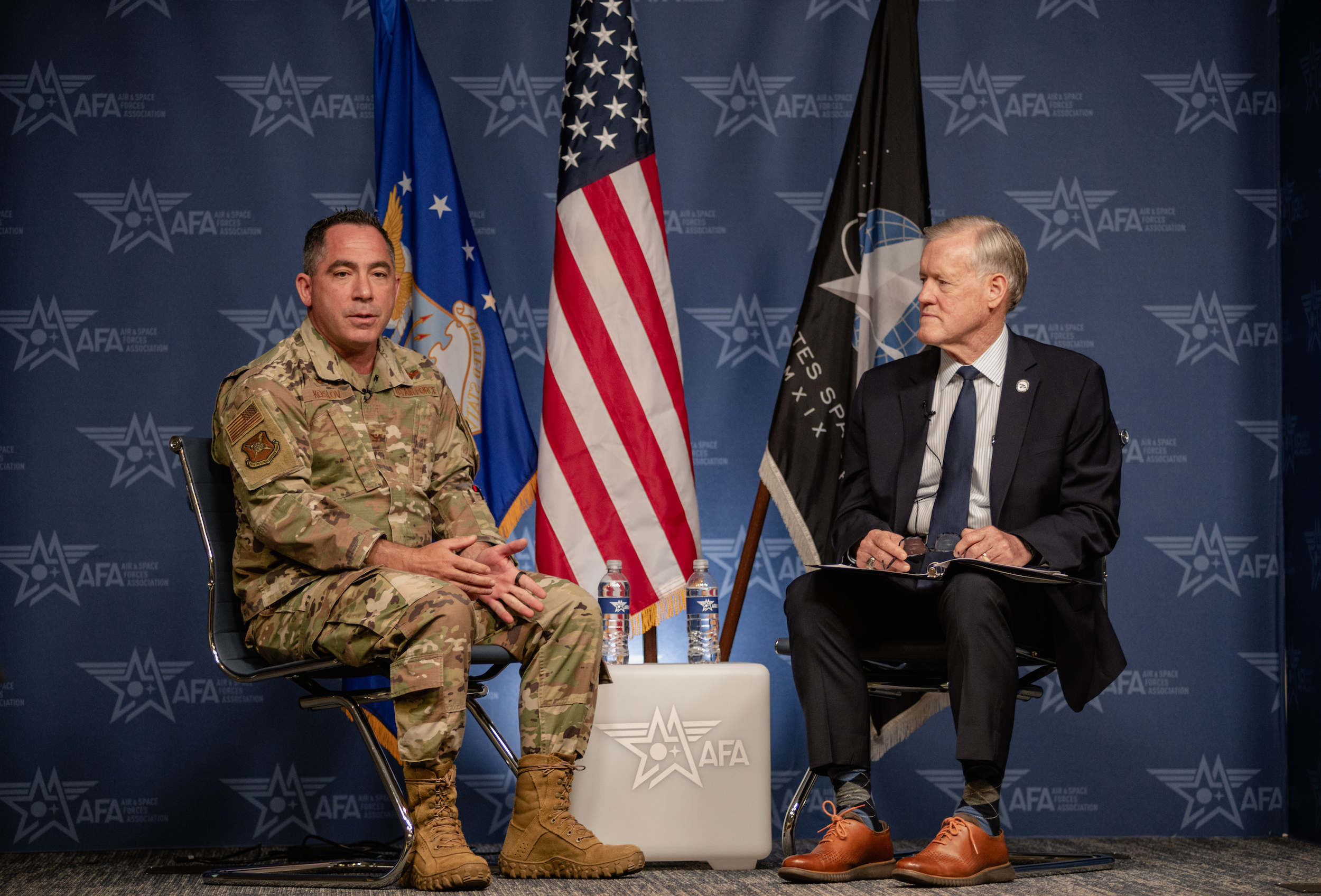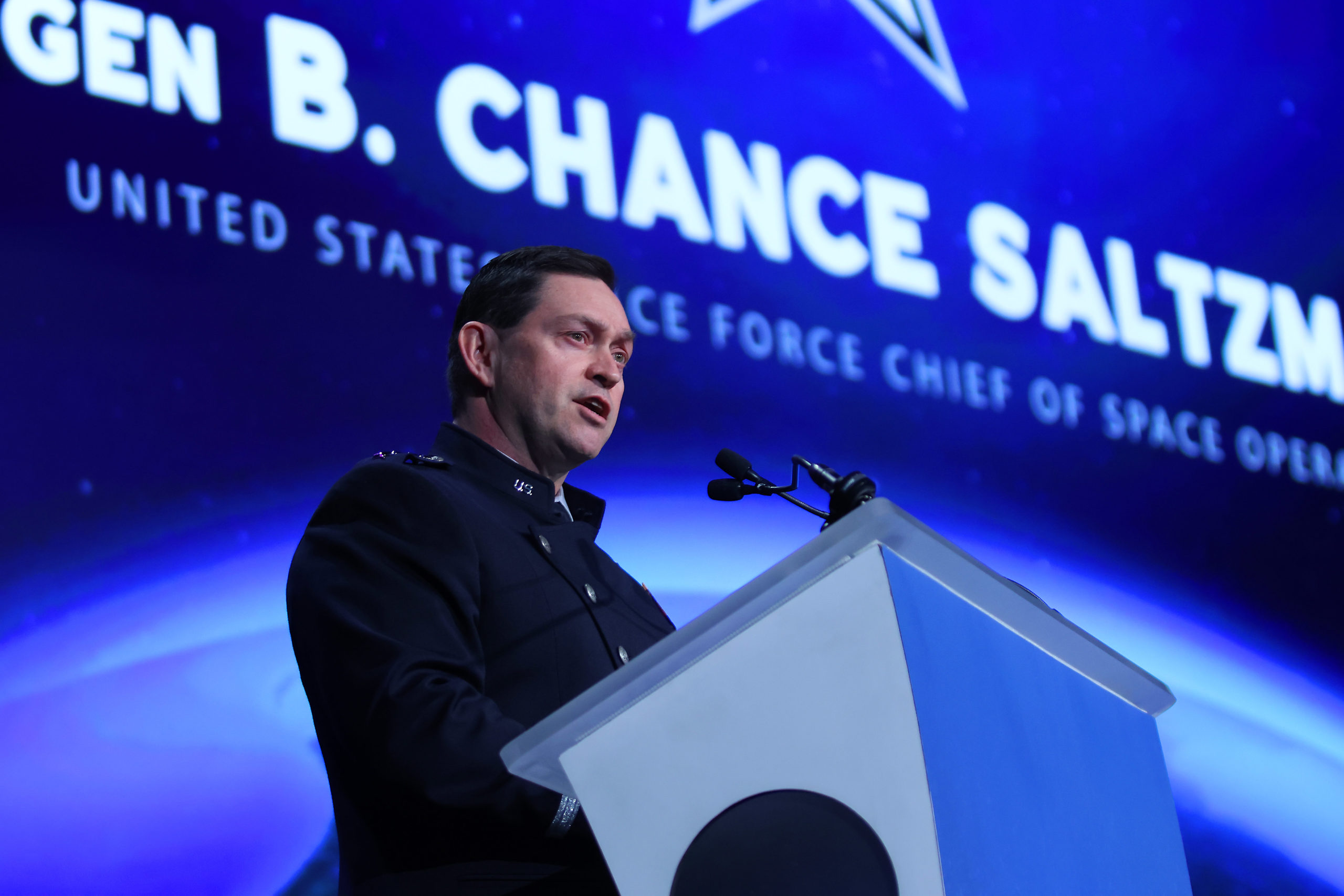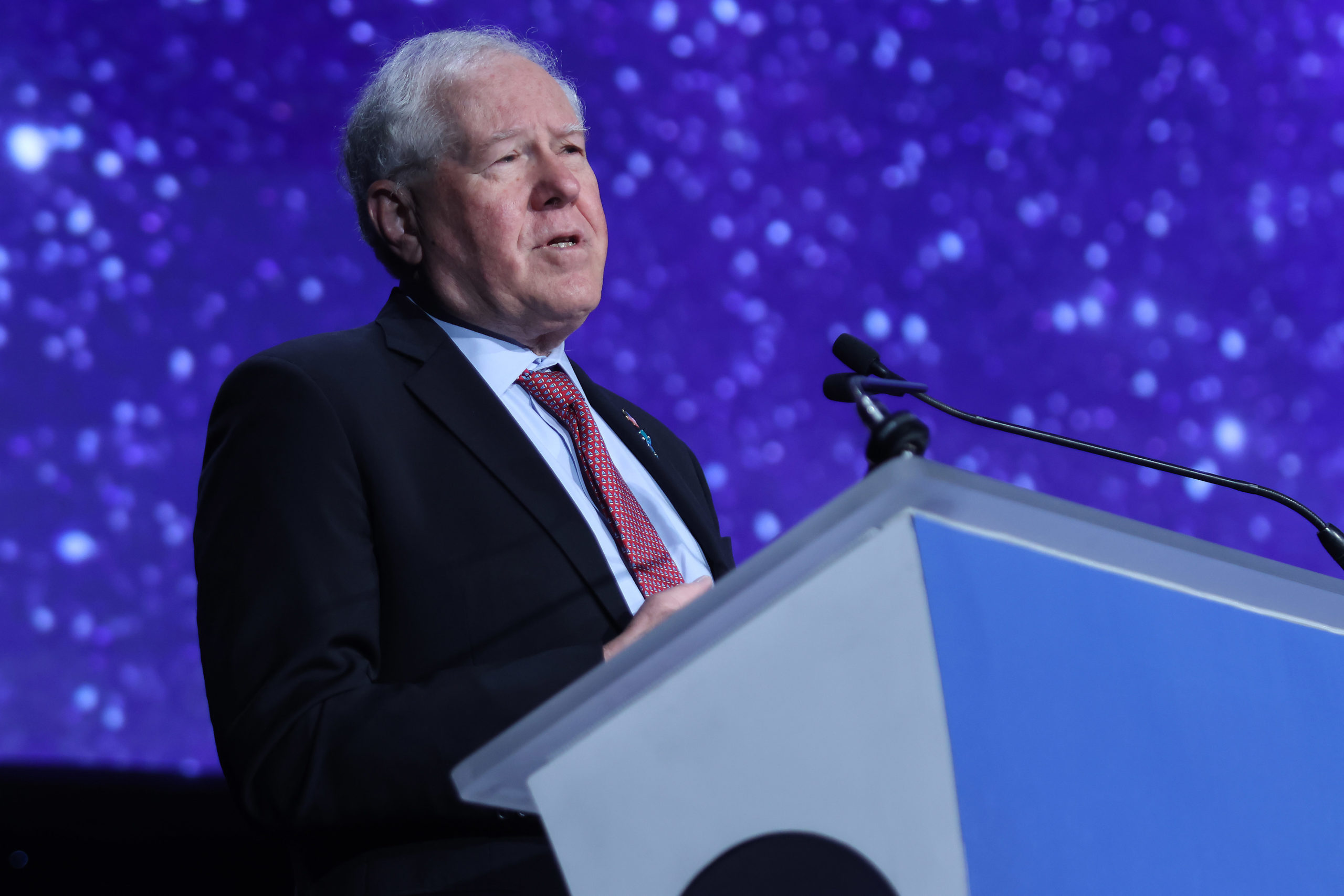After more than 40 years of operations, the F-15 Eagles at Kadena Air Base, Japan, are going out with a bash. Last fall, the Air Force announced the two permanent F-15C/D squadrons at the base would wind down operations. On April 17, the top Air Force commander for the Pacific gave the aircraft a personal goodbye, as Gen. Kenneth S. Wilsbach, the head of Pacific Air Forces, took a ride in an F-15D from the 44th Fighter Squadron.
Wilsbach flew with the 18th Wing to “bid the F-15C/D models farewell,” according to a release. Wilsbach was assigned to Kadena twice in his career and commanded the 18th Wing from 2009-2011. Wilsbach’s flight was part of the larger celebration for those who supported Eagle operations at the base since the first aircraft arrived at the tail end of the 1970s.
The Air Force says it is retiring the F-15s out of necessity as they are too old to keep in service. Lt. Gen. Richard G. Moore, Jr., deputy chief of staff for plans and programs, told Congress in March that there are “three that are grounded forever and four that are only capable of one-time flight to the Boneyard.” Before the wind-down, Kadena had around 48 F-15s.
But the sunset of F-15s at Kadena is raising broader concerns over the Air Force’s capacity in the Pacific.
During a House Armed Services Committee hearing April 18, top Indo-Pacific military and defense officials were grilled on whether the military has enough resources in the Pacific, America’s primary long-term strategic focus.
“We’ve talked about China being the pacing threat, near-peer competitor threat,” Rep. Don Bacon (R-Neb.) said. “I’ve seen the talk, I’ve seen the strategy documents. I don’t know that we’ve actually seen as much physical movement.”
Bacon, a retired Air Force brigadier general and pilot, specifically expressed concern about the USAF’s fleet size when he asked Adm. John C. Aquilino, head of U.S. Indo-Pacific Command (INDOPACOM), if he had enough forces.
“Overall, the force has gotten smaller,” Aquilino said, referring to the services’ overall size. “There’s no doubt about that.”
Aquilino said that since China is the “pacing challenge” according to the National Defense Strategy, he doesn’t want the number of deployed fighters closest to China to shrink.
“I’m concerned with any removal of combat power from the Indo-Pacific theater,” Aquilino said. “As we align and execute the National Defense Strategy, the positioning of those forces certainly would be beneficial to be maintained. Inside of the first island chain where they’re postured … I have supported those forces to remain in place and/or be replaced by equivalent capability and numbers.”
The first island chain is a strip of islands in the western Pacific that are closest to the east Asia mainland, running from Japan to the Philippines and including Taiwan, the self-governing island the Chinese government claims is a rebel province. Important U.S. air bases are located within the area in South Korea and Japan. Kadena is on Okinawa around 450 miles from Taiwan.
Four different types of fighter aircraft from four different bases have cycled through Kadena since November 2022 to fill out the service’s requirements. The base currently hosts fourth-generation F-15E Strike Eagles and fifth-generation F-35 Lightning IIs, in addition to the remaining Eagles. Kadena’s F-15C/Ds are the last of the type in service with the Active-Duty force. It is unclear what the final footprint at Kadena will look like.
Some experts have said the Eagles’ departure exposes a larger issue in the U.S. military that goes beyond any one aircraft type or base.
Retired Lt. Gen. David A. Deptula, dean of the Mitchell Institute for Aerospace Studies, said the Air Force lacks enough fighters to meet the needs of military commanders—an issue that is only growing, he said, as the Air Force plans to shrink its fleet by around 1,000 manned aircraft by 2027 in its current plans.
“The bottom line is that the Air Force requires more resources to buy more fighters and man them appropriately to meet the demands of the National Defense Strategy,” said Deptula, who in 1979 was part of the initial group of pilots that set up F-15 operations at Kadena. “This isn’t about the Air Force. We will not be able to provide the combatant commander in the Pacific with the numbers of advanced fighter aircraft that they need to successfully execute any contingency war plan in the Pacific. That’s the reality of the path that we’re on today.”
The Air Force has noted more advanced fighters are now deployed to Kadena on a rotational basis, but Deptula warned that plan is a “short-term band-aid that will continue to wear out our overall fighter inventory and crews even faster than they’re scheduled to be used up today.”
The U.S. military is hoping boosted alliances in the Pacific can pick up some of the slack and has forged new defense partnerships with the Philippines and Australia. South Korea and Japan, home to Kadena and two other U.S. Air Force bases, have also stepped up their defense posture.
The Japanese government in particular has responded to China’s growing military might and aggressive actions by announcing plans to dramatically ramp up its defense spending after decades of emphasizing a pacifist approach. The day before his F-15 flight, Wilsbach met with top leaders from the Japanese Air Self-Defense Force, and in a news release, Pacific Air Forces said the commanders discussed joint operations.
“Cooperation among Allies and partners is critical in deterring aggression and enhancing interoperability allowing our forces to counter military aggression by sharing responsibilities for common defense,” the release stated.
